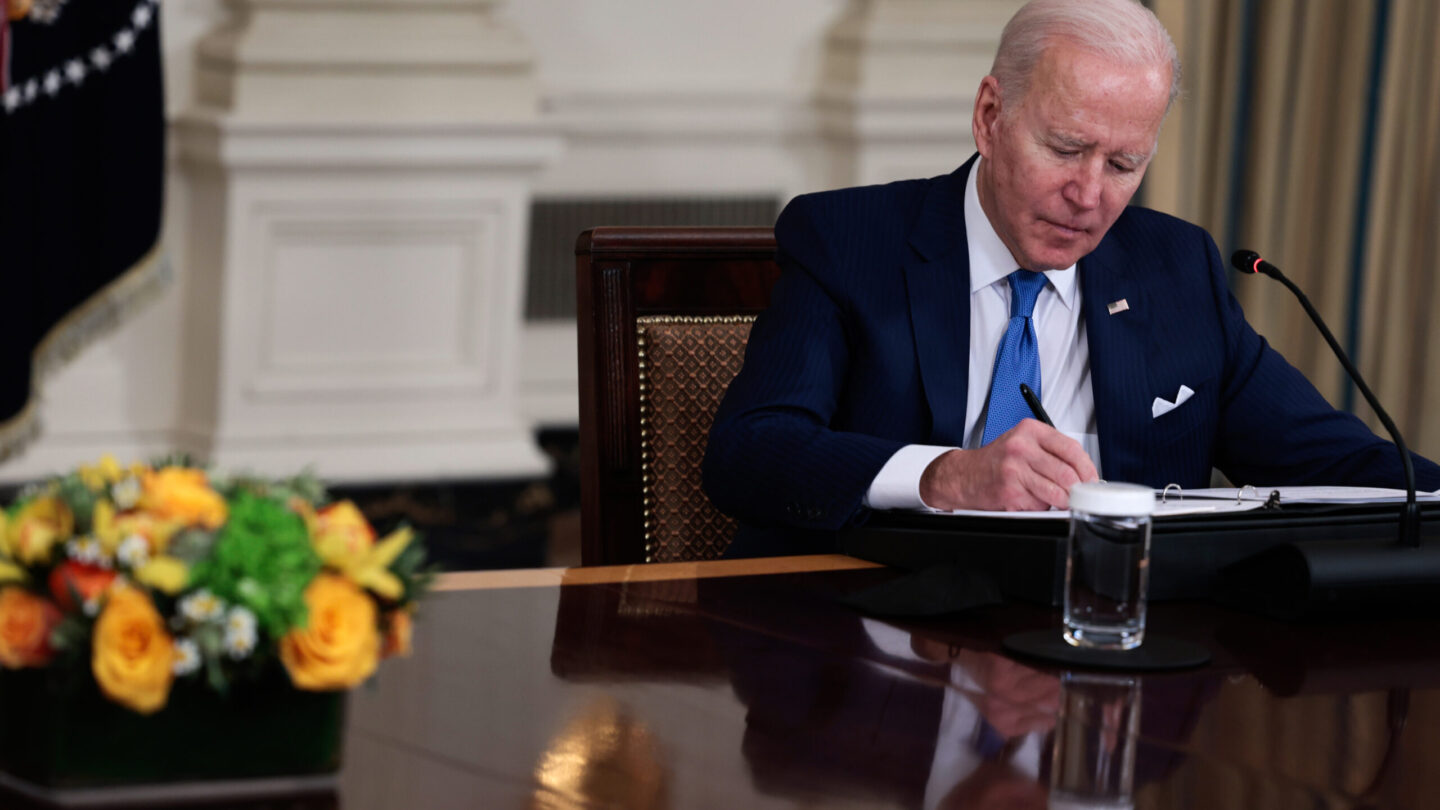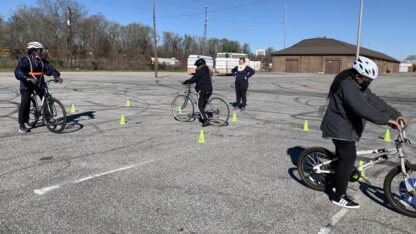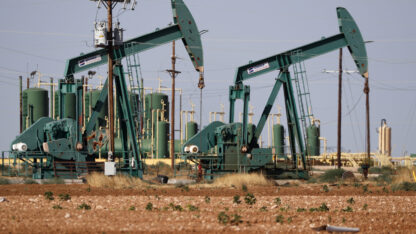In between posts selling anti-wind yard signs and posts about public meetings opposing local wind projects, there were posts that spread false, misleading and questionable information about wind energy. Links to stories about wind turbine noise causing birth defects in Portuguese horses. Posts about the health effects of low frequency infrasound, also called wind turbine syndrome. Posts about wind energy not actually reducing carbon dioxide emissions. Photos of wind turbines breaking, burning and falling — some in nearby counties and states, but some in Germany and New Zealand. According to 2014 data from the Department of Energy, the most recent available, out of the then-40,000 turbines in the U.S., there had been fewer than 40 incidents.
Kitson, the administrator of the Facebook page, says he knows that these accidents aren’t typical. “Those events are not likely. We know that,” Kitson says. But Kitson has seen a broken piece of a fallen turbine blade himself, which got him worrying about how the fiberglass might affect the integrity of the soil and the crops. So he posts the photos and articles, many of which he receives from an anti-wind email list. “I do that just to try to show people what’s possible.”
Kitson’s group is one of dozens in the United States and abroad that oppose utility-scale wind and solar projects. Researchers say that in many groups, misinformation is raising doubts about renewable energy and slowing or derailing projects.
The opposition comes at a time when climate scientists say the world must shift quickly away from fossil fuels to avoid the worst impacts of climate change. But 60% of U.S. electricity still comes from carbon-based fuels.
For the Biden administration to hit its target of an electricity sector free of fossil fuels by 2035, the country has to double or triple the wind and solar power capacity it installs over the next few years and maintain that higher level of deployments for about a decade, says Kelly Speakes-Backman, who leads the Energy Department’s Office of Energy Efficiency and Renewable Energy.
Yet every single rural utility-scale wind and solar project needs local or state approval to get built, says Sarah Mills, who researches rural renewable energy at the University of Michigan. And she says it’s in those often-fractious discussions about approval that misinformation is sometimes halting and stalling the installation of the renewables the climate needs. “At the end of the day, if local governments are not setting rules that allow for the infrastructure to be sited, those policies cannot be achieved,” Mills says.
Misinformation gets mixed up in decisions over renewable projects
Last year, a Department of Energy study found that setback regulations now represent the single-greatest barrier to securing locations for wind projects in the U.S. Setbacks limit how close wind projects can be to buildings, and Mills says they often make sense to reduce things such as noise and “shadow flicker,” the moving shadows and strobing sunlight that turbines can cast onto buildings. But she says misinformation can fuel setbacks that are more stringent than needed and sometimes act as outright bans on renewable energy.
In Ohio, setbacks and other rules associated with renewable projects have historically been set at the state level. But in October, a new law, SB 52, went into effect giving counties the ability to make exclusion zones with no utility-scale wind and solar projects.
Kitson, the science teacher, testified in support of the zones, arguing that turbines negatively affect property values. He pointed to his group’s analysis comparing the lower property values in the one local township that has wind turbines to the higher average property values in the greater county.
But Ben Hoen, a researcher at the Lawrence Berkeley National Laboratory, says his more than 15 years of research has shown that wind turbines have little to no impact on nearby property values. Hoen says, “We have not found evidence of property value impacts despite studying it over multiple periods of time.”
Hoen does say that studies in the Netherlands and United Kingdom have found some effects on property values, but they were far smaller than Kitson’s reference to studies showing a 20%-40% depreciation.
In about half of states, regulations around how and whether to build rural utility-scale solar and wind are determined on the local level, Mills says. “These local officials are not necessarily experts in energy,” she says. “And so when you have people coming and stating things as facts, especially if there’s nobody fact-checking everything, right, it’s difficult. They’re certainly making decisions based on what they’re hearing.”
Facebook groups spread misleading content
In recent years, some of the misinformation about renewable energy has come from former President Donald Trump, who frequently makes misleading and false anti-wind claims at his rallies and media appearances, including the untrue idea that wind turbine noise causes cancer. Earlier this month, when asked about the unfolding Ukraine crisis on a podcast, Trump immediately responded by listing untrue ideas about wind energy.
Other misleading ideas about renewable energy come from groups with ties to the fossil fuel industry, like the Texas Public Policy Foundation. The foundation recently released a film trailer for an anti-offshore wind group in Massachusetts that features multiple falsehoods, including the untrue statement that the proposed project didn’t do any environmental impact assessments and the incorrect idea that offshore wind projects “haven’t worked anywhere in the world.” The Texas Public Policy Foundation did not respond to a request for comment.
But Facebook is one of the biggest drivers of misleading content about renewable energy, says Josh Fergen, a researcher at the University of Minnesota Duluth. Last fall, Fergen and his colleagues published a paper looking at the Facebook posts of Kitson’s group and another large wind opposition group, about 90 kilometers east, fighting the Republic Wind Farm.
Fergen’s paper concluded that posts in the two Facebook pages were “increasing perceptions of human health and public safety risks related to wind by sharing news of disasters and misinformation over health assessment risks.” In June, the Ohio Power Siting Board, whose approval was needed for the site, rejected the Republic Wind Farm proposal citing geological concerns and the local opposition.
NPR reviewed dozens of posts from anti-wind and anti-solar groups. While some posts about climate change denial, lithium mining, and a quote misattributed to Winston Churchill were marked as inaccurate, there were dozens of posts with misleading information about renewable energy that were not tagged.
NPR sent Facebook a sampling of the posts from anti-renewable community pages. Facebook spokesman Kevin McAlister said in an emailed statement, “We take action against content that our fact-checking partners rate false as part of our comprehensive strategy to keep viral, provably false claims from spreading on our apps. The examples shared with us don’t appear to meet that threshold as they have only even been shared a handful of times over a period of several years.”
But Fergen says that these same types of misleading and false posts about wind and solar energy pop up in a network of Facebook groups around the country, feeding a conflict between rural communities and energy developers.
Leah Stokes, an associate professor of political science at the University of California, Santa Barbara, says as resistance to wind and solar projects spreads on social media, the dangers of misinformation from these anti-renewable Facebook groups is growing.
“It can really slow down the clean energy transition, and that has just as dire life and death consequences, not just in terms of climate change, but also in terms of air pollution, which overwhelmingly hits communities of color.”
“It’s about who you trust”
Speakes-Backman says the Department of Energy is trying to do more outreach to local communities about inaccurate ideas surrounding utility-scale solar and wind, especially around land use and environmental effects. “We want to make sure that we are counteracting the misinformation that may be out there,” she says.
But Dahvi Wilson, vice president of public affairs for Apex Clean Energy, says her company is finding that across the country, local engagement is becoming increasingly difficult given community suspicions of renewable energy.
“I think for a long time, and maybe still in some places, developers thought, ‘Well, we just need to give better information. We just need to give more information.’ And it’s like, ‘it’s so not about that at all!'” Wilson says. “It’s about who you trust and if anybody’s going to believe you if you’re a company.”
Hoen of the Lawrence Berkeley National Laboratory says the perception of the community engagement process regarding renewables has real implications — even on human health. He gives the example of shadow flicker, the moving shadows from turbines, which opposition groups often cite when critiquing wind. A few states and several counties have regulations limiting shadow flicker on habited structures, commonly to about 30 hours per year, but most do not, and wind opposition groups argue that the strobing shadows can cause agitation, headaches, or even seizures in some individuals.
Hoen says to date they have not found any evidence of shadow flicker causing seizures, but they have found its relation to annoyance and stress. So Hoen’s group did a study asking: “As the number of shadow flicker hours decrease, is there less annoyance? Are people less bothered by it?”
“What we found, interestingly, is that the individuals that were annoyed by shadow flicker did not necessarily have a higher level of shadow flicker at their home than those that weren’t annoyed,” Hoen says. “And, in fact, what led to that annoyance, it appears, is their perception of the planning process, how they felt like that development got rolled out in their community.”
Given the importance of community engagement in the process of locating wind and solar, Mills says renewable proponents need to be careful that they aren’t romanticizing the projects or providing misleading information themselves, for example, by saying that a wind or solar plant will bring lots of jobs to an area.
“There are a lot of jobs in renewable energy. Many, many of the jobs in renewable energy are in construction trades. And so once the project is built, there’s not tons of jobs associated with the project,” Mills says. “I think in all of this, it’s important to not sugarcoat.”
Anti-renewable groups have internal disputes over use of misinformation
In the last few months, more states — Washington, Iowa and Kansas — have proposed bills to restrict rural utility-scale wind and solar. In Kansas, these bills were proposed by state Sen. Mike Thompson, who also introduced a bill to shut down existing renewable projects.
Thompson, a former meteorologist, is a longtime critic of renewable energy. One of his anti-wind videos even popped up on Kitson’s anti-wind Facebook group.
In one video on the anti-solar group’s YouTube channel, Thompson calls climate change “one of the biggest scams out there” and says “carbon dioxide has no correlation with the temperature on this planet whatsoever.” That statement is false: The vast majority of scientists agree that the climate crisis stems from greenhouse gas emissions generated by human activity. Thompson did not respond to requests for comment.
YouTube spokesperson Elena Hernandez said in an emailed statement, “In general, we don’t recommend or prominently surface content that includes climate change misinformation. Our systems are trained to raise videos from authoritative sources, like news outlets and experts, in search results for certain queries related to climate change and renewable energy.”
Barbara Kerr is a professor of psychology at the University of Kansas and she’s a founding member of that anti-solar group in Kansas, which opposes NextEra Energy’s proposed utility-scale solar plant in Douglas and Johnson counties. Kerr says she knows the videos that have been featured by the group she co-founded have misinformation.
“Just horrible,” Kerr says of the videos. “They are just counterfactual and not something we should have on the website.”
But despite Kerr’s objections, her group decided in January to keep the videos online. “It is important to not judge, and censor utility-scale solar content/opinions contributed by citizens. If we become judge and jury, we are headed down the wrong path,” the group said in an emailed statement.
Kerr says that while she disagrees with the misinformation used by some in her group, she says the anti-solar coalition makes for “strange bedfellows.” “Sometimes you have to compromise,” she says. “I don’t want to alienate these people. They go to the meetings in Douglas County and Johnson County.”
But Dan Reuman, professor of ecology and evolutionary biology at the University of Kansas, says he worries about the role misinformation could play in the decision-making over the solar project, which he supports. He says that while he is sympathetic to those in his county who don’t want to live near a large-scale solar plant, he also thinks their concerns need to be weighed against the need to mitigate climate change.
“I just find it upsetting,” Reuman says. “I hope that the government doesn’t make a compromise between a scientifically based position and a misinformation-based position. Because if you’re compromising with misinformation, then there’s sort of no limit to that, right?”
Editor’s note: Facebook’s parent company, Meta, pays NPR to license NPR content.
Copyright 2022 NPR. To see more, visit https://www.npr.org.
9(MDAxODM0MDY4MDEyMTY4NDA3MzI3YjkzMw004))

9(MDAxODM0MDY4MDEyMTY4NDA3MzI3YjkzMw004))








